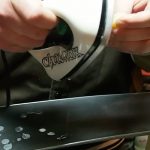 LEFT: Fathom Stone Gallery. RIGHT: Art Junction
LEFT: Fathom Stone Gallery. RIGHT: Art Junction
Art is exceptional because with art you can take risks without worrying about the consequences – artists can make mistakes, throw it all away, and start again. If risk, not variety, is the true spice of life then art allows us to live anything we can dream, and more. In that sense Art may be the most important human construct.
And to compliment all its stunning natural beauty (and kick-ass mountain activities) Whistler also boasts over a dozen world class art galleries exhibiting work from around the globe. From sculpture to photography, paintings to First Nations carvings the Whistler art scene is as diverse as it is established.
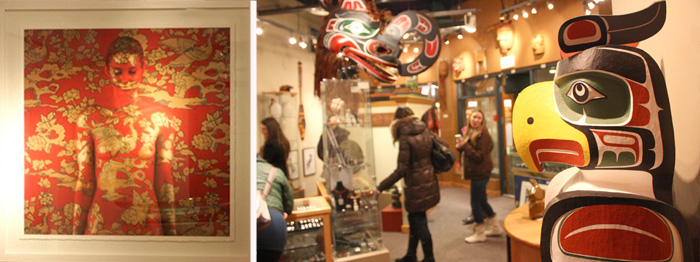 LEFT:Emma Hack at Whistler Village Art Gallery. RIGHT:Black Tusk Gallery
LEFT:Emma Hack at Whistler Village Art Gallery. RIGHT:Black Tusk Gallery
“The maturity of the galleries here means we can now be more courageous with what we represent,” says Jeanine Messeguer, director of the Whistler Village Art Gallery since 1993. “International clients are expecting to come in and see something new and different.”
“Diversity is everything,” says David Helfrich, director of the The Plaza Galleries, which opened in 1995 and holds Whistler’s largest collection of artwork. “I’m eclectic so 70-80% of the artists showcased, we might be the only gallery in Canada that has their work. The best thing about Whistler is we get such an international clientele, so we are able to sell art on a global level.”
“Our international clients want to see the validity of work that is internationally recognized,” Messeguer adds. “Even our local artists and clients want to see what is out there from the rest of the world.”
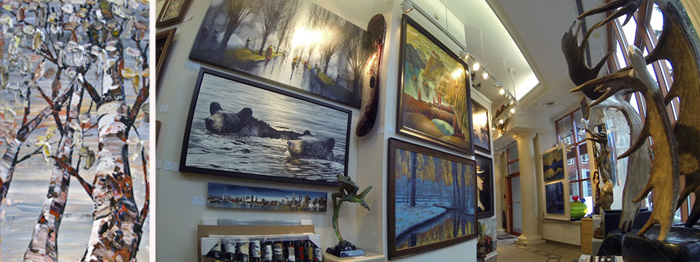 LEFT: Maya Eventov at The Plaza Galleries. RIGHT: The Plaza Galleries.
LEFT: Maya Eventov at The Plaza Galleries. RIGHT: The Plaza Galleries.
The local Whistler artists also enjoy a well-established scene. The Whistler Arts Council is over 30 years old and their recent acquisition of the Scotia Creek Gallery in Millennium Place was a huge win for local artists.
“That has been fantastic,” says Chili Thom, Whistler’s favourite homegrown artist. “Galleries like Art Junction or White Dog have always been very supportive but having a space like Scotia Creek right in the Village that is open daily to showcase local art on a large scale, it’s been amazing. Plus, it’s right across the street from the new Audain museum, that is going to be incredible.”
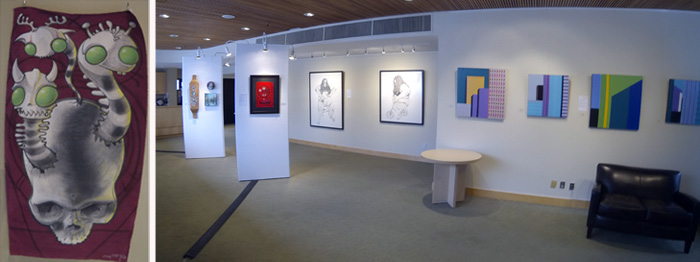 LEFT:Dave Petko at Scotia Creek Gallery. RIGHT: Scotia Creek Gallery
LEFT:Dave Petko at Scotia Creek Gallery. RIGHT: Scotia Creek Gallery
That “new” Audain Museum doesn’t actually open until 2015 but it will certainly be a highlight for anyone interested in art. An iconic 55,000 square foot facility tucked into the forest east of the Whistler Olympic Plaza, the museum will house one of the world’s finest collections of First Nations masks as well as significant pieces from Emily Carr and other Canadian art icons such as Jack Shadbolt, E.J Hughes and Gordon Smith.
“The Audain Museum will be the feather in the cap,” says Helfrich. “It will help educate more people about art and really round out the culture here.”
Combined with Whistler’s pre-existing galleries and the local artifacts and artwork at the Squamish Lil’Wat Cultural Centre the Audain Museum may be the turning point for helping transform Whistler into a bona-fide Arts and Culture destination all of its own.
“Whistler’s magnificent beauty and mountains are such an amazing draw,” says Messeguer, “but with this museum and all the established galleries, art is becoming a valuable add-on experience for our guests, similar to all our fabulous restaurants.”
And for those looking to buy some artwork in Whistler this year, Messeguer offers this tip: “A lot of time the first piece that jumps out at someone is the one they will end up buying. That subconscious emotional reaction is the strongest one, often the brain might start interfering or suggesting but instinct is usually the way to go.”
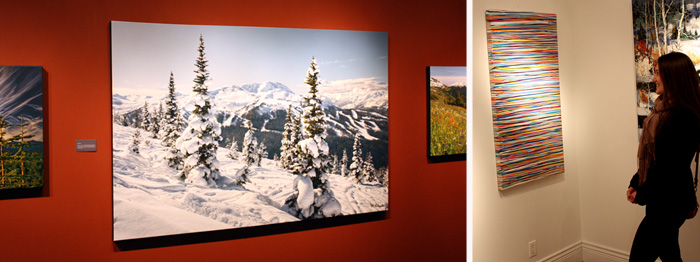 LEFT: Mark Richards Gallery. RIGHT:Whistler Village Art Gallery
LEFT: Mark Richards Gallery. RIGHT:Whistler Village Art Gallery
Whistler.com has a list of all the galleries in town plus all kinds of helpful info about everything from accommodation to tasting tours to ski lessons and more.
